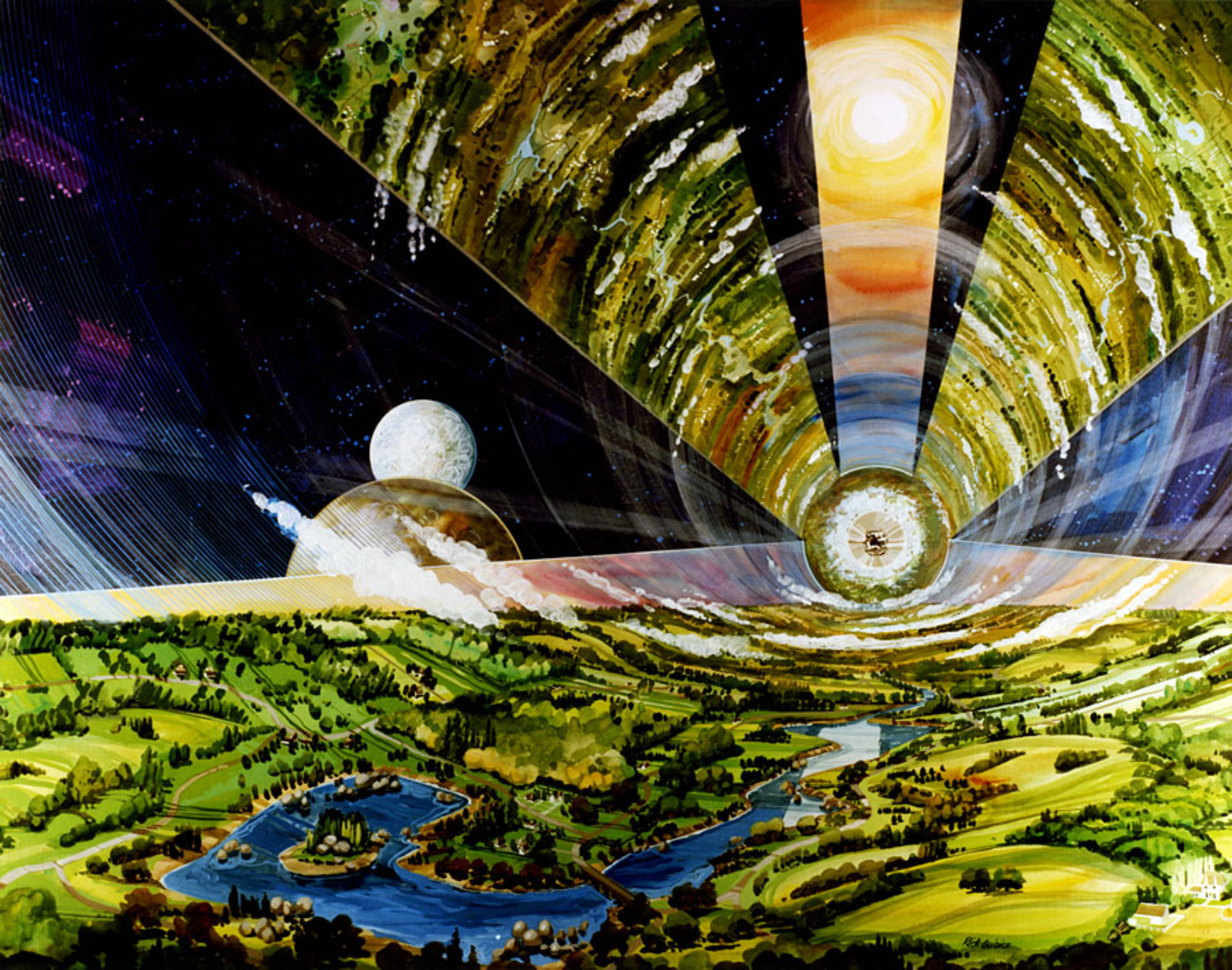
Space settlement advocates know that we will have to take our biosphere with us to space to produce food, provide breathable air and recycle wastes. Completely closing the system, i.e. recycling everything is a huge technological challenge, especially on a small scale like what is planned for settlements in free space or on the surfaces of the Moon or Mars. Fortunately, there are plenty of raw materials in the solar system for in situ resource utilization so we can live off the land, so to speak, until our bioregenerative life support system efficiencies improve.
Early research into crop production in space has been performed on the ISS. But the road ahead for space agriculture in the context of life support systems needs careful planning to pave the way toward biologically self-sustaining space settlements. A team of scientists at NASA is working on a roadmap toward sustainability with a step-by-step approach to bioregenerative life support systems (BLSS) that will provide food and oxygen for astronauts during the space agency’s mission plans in the decades ahead. In a paper in the journal Sustainability they identify the current state of the art, resource limitations and where gaps remain in the technology while drawing parallels between ecosystems in space and on Earth, with benefits for both.
Simulation and modeling of BLSS concepts is important to predict their behavior and help inform actual hardware designs. A team at the University of Arizona performed a study recently analyzing the inputs and outputs of such a system to improve efficiencies and apply it to food production on Earth in areas challenged by resource limitations and food insecurity. Sustainable ecosystems for supporting humans on and off Earth have similar goals: minimizing growing space, water usage, energy needs and waste production while simultaneously maximizing crop yields. The team presented their findings in a paper presented at the 50th International Conference on Environmental Systems held last July. In the study, a model of an ecosystem was created consisting of various combinations of plants, mushrooms, insects, and fish to support a population of 8 people for 183 days with an analysis of total growing area, water requirements, energy consumption and total wastes produced. The study concluded that “In terms of resource consumption, the strategy of growing plants, mushrooms, and insects is the most resource-efficient approach.”
At the same conference, an update was provided on a Scalable, Interactive Model of an Off-World Community (SIMOC). SIMOC was described in a previous post on the Space Analog for the Moon and Mars (SAM) located at Biosphere 2 in Arizona. SIMOC is a platform for education meeting standards for student science curriculum. Pupils or citizen scientists can customize human habitats on Mars by selection of mission duration, crew size, food provisions as well as choosing types of plants, levels of energy production, etc.. Users gain an understanding of the complexity of a BLSS and the tradeoffs between mechanical and biological variables of life support for long duration space missions. There is much to be learned on the limitations and stability of closed biospheres, as discussed last year.

Across the Pond, our European friends at LIQUIFER Systems Group are working on greenhouses for the Moon and Mars derived from the EDEN ISS simulation facility in Antarctica.
A BLSS based on plant biology could be augmented with dark ecosystems, the food chain based on bacteria that are chemotrophic, i.e. deriving their energy from chemical reactions rather then photosynthesis, which could significantly reduce the inputs of energy and water.
A concept for a lunar farm called Lunar Agriculture, Farming for the Future was published in 2020 by an international team of 27 students participating in the Southern Hemisphere Space Studies Program at the International Space University.

As a treat to cap off this post, a retired software engineer and farmer named Marshall Martin living in Oklahoma provided his perspective on crops in space on The Space Show recently. A frequent caller to the program, this was his first appearance as a guest where, like the NASA team mentioned earlier, he recommends a phased approach to space farming starting with small orbital facilities, testing inputs and outputs as we go, to ensure the economics pay off at each stage of our migration off Earth. He even envisions chickens and goats as sources of protein and milk, although the weight limitations for inclusion of these animals in space-based ecosystems may not be possible for quite some time. Its unlikely that cows will ever make it to space but cultured meat production is a real possibility for the carnivores among us which is being studied by ESA.

Finally, for those thinking long term of eventual settlement of the galaxy, there are even some people modeling life support systems for interstellar arks.




